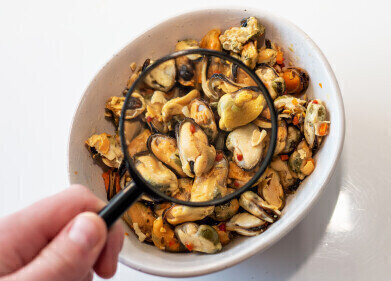GC-MS
How Can Chromatography Help Monitor Plastic Pollution?
May 26 2019
Plastic pollution seems to have reached all parts of the globe. From the highest mountains and deepest ocean trenches, even in the remotest jungles - evidence of man’s love affair with plastic is everywhere. With a raised media profile, could mankind be finally be starting to address how our most ubiquitous man-made material is affecting the planet.
Plastics everywhere - and going nowhere fast
We are surrounded by plastics. You are probably reading this on a device that utilises plastic of some description. Since plastics were introduced in the 1950s they have revolutionised our lives. Nowadays, almost 400 million tons of plastic is produced each year - and currently our use of plastic does not seem to be slowing down. Plastics are derived from crude oil, so not only are we using a non-renewable natural resource in our manufacture of plastic, but we are also creating pollution in the manufacture of plastic. But one of the main problems of plastic is also one of the reasons we love it - once it is made, it lasts forever.
MP in the sea and ocean - don’t forget the freshwater too
Plastic pollution in our seas and oceans was first reported in the 1970s. Bits of plastic floating on the ocean and lying on pristine beaches are easy to spot as they spoil our holidays and damage equipment. They are also harming the fish and marine animals with countless studies highlighting the quantity of plastic found in the bodies of fish and other marine animals.
In freshwater systems the situation is just as bad, although the research has only just started catching up to that for marine environments. In a recent paper published in the journal Trends in Analytical Chemistry - Microplastics in freshwater environments: A review of quantification Assessment - researchers state that
Determination of the density, size distribution, and composition of MP particles in aquatic systems is a relatively new endeavor and presents some challenges for developing standardized sampling and reporting methods
Plastics in the lake too
Determining the quantity and type of plastic in our freshwater environments in not easy, as the plastics are not distributed evenly in the water column and the concentration will decrease as the distance from the source increases. The authors of the paper reviewed the literature currently available for analysing microplastics in aquatic environments to help them develop ideas about the best methods to gain data about microplastics in freshwater.
Their conclusions are that it is difficult to obtain data using just microscopy, and that one of the better methods is to use gas chromatography coupled to mass spectrometry. The use of chromatography to analyse oil-based products is discussed in the article, High-resolution MS coupled to Photoionisation-GC×GC for Petrochemicals Characterisation.
Digital Edition
Chromatography Today - Buyers' Guide 2022
October 2023
In This Edition Modern & Practical Applications - Accelerating ADC Development with Mass Spectrometry - Implementing High-Resolution Ion Mobility into Peptide Mapping Workflows Chromatogr...
View all digital editions
Events
Apr 28 2024 Montreal, Quebec, Canada
May 05 2024 Seville, Spain
May 15 2024 Birmingham, UK
May 19 2024 Brno, Czech Republic
May 21 2024 Lagos, Nigeria














